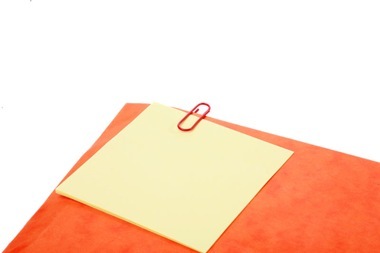Last week, I talked about finally getting my projects in order. Of course, that’s not a one-time thing, but I’m not quite ready to talk about the process of bringing new projects into my lists just yet, whether “on-the-fly” or as part of my weekly review. But getting a grip on my projects, both big (there’s a book proposal I want to write) and small (I need to find a decent dentist) is a two-step process. The first is what I described last week: identifying all my active projects and getting some next actions assigned to each of them. The other part of the process is setting myself up to actually do them. In some cases, of course, I can just figure out what needs doing and go ahead and do it. But for the bigger projects, I need materials, and that means files. Maintaining files is a weak area for me, not because I, like any other full-blooded productivity geek, don’t have a healthy lustful appreciation of file folders and my standard-issue GTD label-maker, but because it’s the least interesting and fussiest part of doing anything. But I’m 1800 miles from home – if I am going to get anything done in this 5-week sojourn, I don’t have any room to forget anything crucial, or for being disorganized. I can’t think of anything less interesting than talking about putting paper in folders (except maybe actually putting paper in folders) and I’ve posted about filing before, so I won’t get into the mechanics of it all here, except to say that every project gets a folder (or sometimes a hard-bound notebook, if it will be unfolding over a long period of time) and every folder is neatly labeled. While a project is active, I’m careful to keep every scrap of paper related to it – I would rather have a little extra cleaning to do at a project’s close than find myself without something I didn’t know would be important down the line. What I do want to talk about here is that perennial chestnut of personal productivity literature: paper vs. technology. Now, I’m a big old geek, no getting around that. I’m the kind of guy whose as likely to have his nose stuck in his Blackberry as not, who fantasizes about new home network configurations (I’ve got two old PCs under my kitchen table waiting to be repurposed…), and who travels with not one but two laptops. I love well-designed software that does a job beautifully, and love the searchability and security of keeping important information in electronic form, preferable backed up in multiple places. That said, I am as far from paperless as possible. My productivity system, indeed my office as a whole, is “paper-full”. For all the arguments against it – and believe me, the environmental impact alone pains me, though I try to use recycled paper whenever I can get it – I find paper is important. No paper, no productivity. For one thing, I’m a writer. And while I am pretty comfortable letting words flow from my fingers through the keyboard to the screen, I can’t edit that way. I’m just not comfortable enough with the screen to read for any length of time at it, and especially not to do the kind of finicky re-thinking involved with a revision for publication. But that’s just for writing. My preference for paper goes way beyond just editing and revising. And here is where, I hope, it gets interesting for GTD’ers everywhere. There’s something very physical about GTD, or perhaps about working in general. Something about writing things down with pen or pencil on actual paper, about holding things in your hands, that acts as a trigger for action. Email, Evernote notes, tasks on online Todo lists – I find it all too easy to scroll through them, to glance at them and think “yes, that’s something that has to be done” and not actually do it. But paper, something I hold in my hands, something I physically manipulate… It’s as if physically interacting with my work in a material way triggers that animal part of me that feels the sun moving across the sky and knows that work must be done, and if not now, it will be too late. So while I use all manner of virtual technological tools to get things done, in the end most things funnel to a paper file – a nice, heavy file folder stuffed with papers. I buy decorative file folders for two reasons: a) they tend to be made of sturdier stock than plain folders, thus holding up to use better, and b) they are easily differentiated one from the other, making my work just that little bit easier to get to. When I’m ready to go to work, the folder comes out, the contents get scanned, and somehow, almost as if by magic, I get down to working. And things get done.
